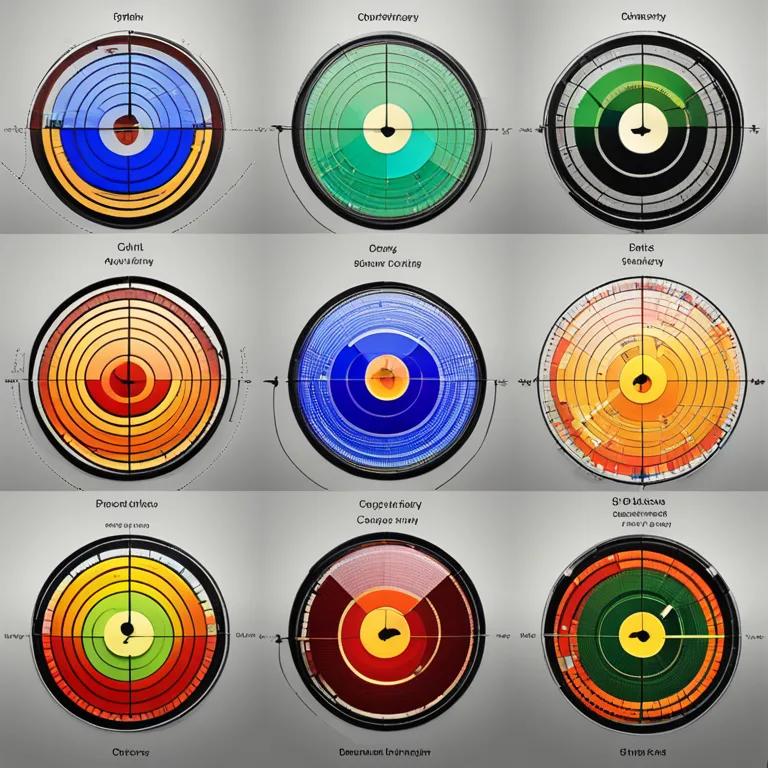
Biorhythms and Psychological Well-being
Delve into the link between biorhythms and psychology, and understand how these natural cycles can influence mental health and daily life.
article by Adrian Wallace
The Biorhythmic Basis
In recent years, the intersection of biorhythms and psychology has garnered attention from wellness enthusiasts and professionals alike. Biorhythms are the innate cycles within humans that reportedly influence our physical, emotional, and intellectual states. According to biorhythm theory, these cycles begin at birth and oscillate in a predictable pattern throughout life. Understanding the rhythmic ebb and flow of these energies could shine a new light on psychological well-being and personal development.

Core Cycles and Their Impacts
Three primary biorhythm cycles are theorized to affect us—the physical (23-day cycle), emotional (28-day cycle), and intellectual (33-day cycle). Each cycle has its own high, low, and critical phases, with potential implications for mood, cognition, and physical resilience. Advocates of biorhythmic psychology suggest that awareness of these cycles can help individuals anticipate their own periods of strength and vulnerability, shaping how they approach tasks, relationships, and self-care.

Interpreting Biorhythm Charts
Modern websites and applications now generate personalized biorhythm charts, providing a visual representation of individual cycles. By interpreting these charts, it's said that one can predict peak performance days, potential slumps, and times of increased risk for accidents or errors. Critics, however, caution that empirical evidence for biorhythms' predictions remains scant, suggesting that while intriguing, interpretations should be coupled with critical thinking and personal insight.

Biorhythms in Therapeutic Contexts
Within therapeutic settings, biorhythms have found a niche among holistic practices aimed at aligning the body's natural rhythms with lifestyle choices. Practitioners may integrate biorhythm tracking into therapy to provide personalized suggestions for activity scheduling, rest, and emotional processing. This approach reflects a broader shift in psychology towards integrative methods that consider physiological and circadian influences on mental health.

Critical Views and Scientific Scrutiny
The scientific community remains divided on the subject of biorhythms and their effect on psychology. Researchers argue for more robust studies to validate or refute the claims made by biorhythm enthusiasts. Nonetheless, the concept persists, perhaps underlining a human desire for patterns and predictability in an unpredictable world. It also underscores the interplay between our search for knowledge and the allure of the enigmatic in human psychology.
Biorhythms in Daily Life
Incorporating biorhythms into daily life highlights the principle that being attuned to personal rhythms can foster work-life balance and self-understanding. Whether one fully embraces biorhythmic theory or takes it with a grain of salt, tracking one’s own patterns can offer a reflective tool for better managing time, energy, and emotions. Supporters argue this awareness can ultimately lead to improved health outcomes and a richer, more harmonious life.
Future Directions of Biorhythmic Studies
Looking ahead to 2024 and beyond, we can anticipate continued discussion and research into biorhythms and their psychological implications. Technology will likely evolve to provide more sophisticated ways of monitoring and interpreting personal cycles, potentially integrating artificial intelligence to offer tailored recommendations. As the dialogue expands, so too will the understanding of how these age-old concepts apply to the modern human experience.
Published: 12/28/2023
Modified: 12/28/2023
More predictions
Come back here soon to learn more about yourself and your future


The Practical Uses of Biorhythms in Our Lives
Discover how biorhythms can be applied to improve well-being and achieve a better understanding of personal cycles in health, decision-making, and relationships.


The Rhythms of Life: Delving into Biorhythm
Discover how biorhythm cycles influence your physical, emotional, and intellectual wellbeing, and how to track these patterns for optimal living.


Biorhythm: The Significance of Compatibility
Discover the significance of biorhythm compatibility in relationships and how syncing life cycles can impact partnership dynamics.